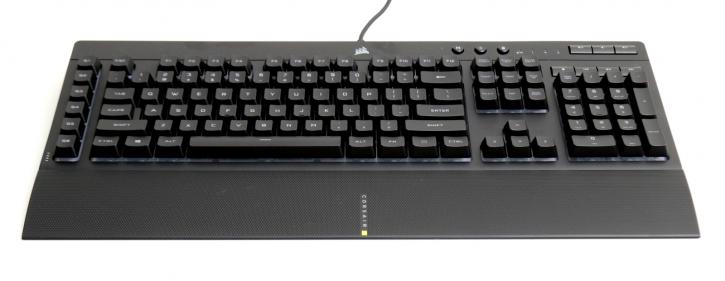Article
Corsair K55 RGB PRO XT Gaming Keyboard review
You know it, Corsair has been dominant with their high-end and flagship gaming keyboards. However, they're still offering some very desirable keyboards in a far more interesting product category in that sub 70 USD space. With the new K55 RGB Pro (XT), Corsair wants to offer a board keyboard series that aesthetically and technically looks like the high-end models, at a far lower and fair price.
This marks the launch of the Corsair K55 RGB Pro and the Corsair K55 RGB XT, their latest feature-stuffed keyboards that are membrane-based. In this review, we check out the new K55 RGB XT PRO series keyboard. The units have overhauled aesthetics and overall a better slash sweet-spot price point. Add to that more RGB lighting zones than you'll need. The interesting thing today, however, is that the keyboard is membrane-based, so no, you will not find mechanical switches here. This 69 USD (PRO XT) model also has six G keys that can be configured with the Elgato Stream deck software and, of course, iCUE as well. It is a truly interesting thing that the keyboard is membrane-based, which means rubber dome-based keyboards. You haven't heard that for a while, eh? Some gamers will hate it; others will love it. This editor, for example, has been typing 90% of the content you've read on rubber dome-based keyboards. Somehow I find them quite pleasant to type on, and they're a bit more silent as well with that rubber membrane. For gamers that means less precision, a softer deeper and press on the key would describe the difference best, less sharp perhaps is the word. The K55 RGB Pro XT keyboard comes out at a higher price than the previous K55; however, the XT has per-key RGB backlighting. Other features include dust and spill resistance, dedicated macro keys, anti-ghosting, and Windows key lock. There’s a minor performance boost in the form of a 12-key rollover as well; also, the original K55 had an eight-key rollover. But that’s pretty much it in terms of easily distinguishable differences. There's more to it, of course; Corsair would not be Corsair if they did not add stuff. By your command, you can configure a very intricate Lighting Multi-colour (RGB) setup; you'll spot Keycaps that are level elevated all in a product weighing 940g. Special features would be 16 multimedia keys (6 programmable), Anti-Ghosting (12-Key-Rollover), FN-Button, and hey now, this puppy is splashproof with an IP42 rating, so if you spill some coffee or thee on it, rinse it off, and you can continue. This is also handy to clean the keyboard as elevated caps are prone to collect dust/dirt over time.
As stated, you'll spot six G-keys on the left, which I like to call the G-Spot, now configurable within the Elgato stream deck software as well. The keycaps are fairly standard thin mainstream ABS plastic with laser-etched legends. We deem that as acceptable and generally what you see with membrane keyboards at this price point. Of course, the keycaps support backlighting. The K55 RGB PRO XT launched a week or so ago, at $69.99 with similar EUR prices. It should be noted that you can go cheaper, as the non-XT model (K55 RGB PRO) drops the per-key lighting but costs only $49.99, it still offers five-zone RGB backlighting though fewer onboard lighting effects. The PRO XT enhances that five-zone backlighting of the regular keyboard to per-key RGB with stimulating and bright colors. You can easily configure it all using Corsair’s new v4 iCUE software.
And yeah, when looking at it you probably agree that you're looking at it will already get you a lot of keyboard for the money from an aesthetic point of view.


